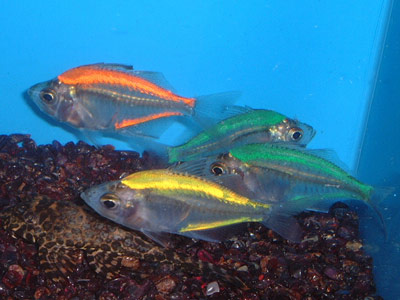


How long does an Indian glassy fish live? If it is living in a slightly brackish aquarium, it would make good tank mates with Mollies. If it is being kept in a freshwater aquarium, some good tank mates would be rainbowfish, corys, tetras, and guppies. Whether it is in the wild or in an aquarium, they prefer to stay and travel in small groups. The Parambassis ranga is usually a part of active and bold shoals or groups of five. This tropical fish or Indian x-ray fish has a shy temperament but that does not stop it from congregating. (Brackish water is saltier than fresh water, but not as much as seawater.) If you are looking to adopt an Indian glassy perch for your aquarium, you should learn under what condition and temperature they have been living previously. There exists a popular misconception that the fish can only survive in slightly brackish water. They typically live in slow-moving or standing water. This Indian glassy fish habitat is in the freshwater. It can be found living in India, Myanmar, Malaysia, Thailand, Cambodia, Pakistan, Bangladesh, and Nepal. This freshwater Asiatic glass fish has a wide range and is distributed in many parts of South Asia. But the species has been listed as Least Concern and their population is known to be stable. How many Indian glassy fish are there in the world?Īn accurate estimate of the number of mature Parambassis ranga or Indian glass fish in the world is unavailable. Indian glass fish belongs to the class order Actinopterygii. What class of animal does an Indian glassy fish belong to? The glass fish belongs to the family Ambassidae. Its scientific name is Parambassis ranga. The Indian glass fish formerly known as Chanda ranga, is a species of fish. Indian Glassy Fish Interesting Facts What type of animal is an Indian glassy fish?

If you want to keep learning, do check out some interesting facts and information about the catfish and the tilefish. It is unfortunate that the species is often painted or injected with fluorescent colors for commercial purposes since the process is not only painful but also causes early death. They are efficient carnivores who feed on various kinds of worms and shrimp in the wild and live or frozen food in captivity. These glassy pets are shy when alone but bold and energetic when they are swimming around in groups. The fish is heavily distributed in South Asian countries And although there are many nuances like water hardness, correct water temperature, aquarium size, need for brackish water that should be kept in mind while adopting the species, it is still very popular in the aquarium trade. The Indian glassy fish (scientific name Parambassis ranga) previously classified as Chanda ranga is known by many names namely siamese glassfish, disco fish, Indian glass perch, and Indian glassfish.


 0 kommentar(er)
0 kommentar(er)
